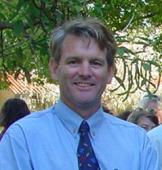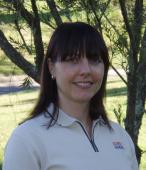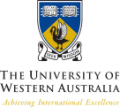surveillance
This project will develop a range of computational models that can be used for testing various strategies relating to surveillance and management of fungal pathogens that undergo aerial dispersal. The research will also explore the effectiveness and feasibility of ongoing surveillance for the arrival of novel fungal pathogens in the Western Australian wheat belt and the effect of resistant cultivar selection on the genetic structure of fungal meta-populations. Finally the project will identify optimal strategies for the regional management of resistant cultivars.
What is the biosecurity problem?
A number of fungal plant pathogens of interest to biosecurity agencies undergo wind-assisted dispersal. This mode of transport allows pathogens to spread quickly and easily, and can result in rapid occurrence of multiple site infections. Deployment of resistant cultivars can be effective in controlling the spread of disease, however careful management is required to avoid breakdown of resistance leading to subsequent epidemics.
The main outputs of this project are to create?
- a model of wind-assisted dispersal able to simulate the dispersal of fungal pathogens across a given landscape under a given set of environmental conditions
- a surveillance model that allows rapid assessment of surveillance strategy capabilities to detect the movement of airborne fungal spores into or out of a given area
- an assessment of the feasibility and likely benefits of ongoing surveillance in the Western Australian wheat belt
- a spatially explicit, dynamic model of population genetic structure for fungal pathogens undergoing aerial dispersal in a fragmented landscape, and
- an assessment of optimal strategies for the spatial and temporal management of resistant cultivars.
Who will be the end-users of your research?
This research will be used to inform policy development relating to the detection of invasive organisms. The models constructed as part of this research will also be employed for further research into the genetic structure and dynamics of meta-populations in agricultural environments.
STUDENT

Mr David Savage
Student CRC60076: Spore Modelling PhD
david.savage@mac.com
Phone: 08 6488 7795
Read More
PROJECT DETAILS
Complete
Supervisor
Michael Renton and Martin Barbetti (University of Western Australia), Bill Macleod and Moin Salam (Department of Agriculture and Food Western Australia)
Supervising Institution
University of Western Australia
Term
March 2008 - March 2011
LOCATION
We participated in the ‘Search and Detection: Theory and application in disease and wildlife management' conference, hosted by Landcare Research at Victoria University in Wellington, New Zealand, from Nov 10 - 11, 2008. Other conference collaborators included the Australian Biosecurity CRC for Emerging Infectious Disease, Australian Wildlife Management Society, Invasive Animals CRC, and the New Zealand Ecological Society.
TRAVEL DETAILS
WHITTLEP
When: November 2008
Location: Wellington, New Zealand
Summary:
Dr Peter Whittle and Frith Jarrad presented a paper titled ‘Biosecurity surveillance design: detecting non-indigenous vertebrate introductions using risk and power' at a conference in New Zealand.
LOCATION
We participated in the Australasian Wildlife Management Society 21st Annual Conference: Human Impacts on Wildlife in Fremantle, WA, from November 24 to 27, 2008. Conference collaborators included the Invasive Animals CRC, Department of Agriculture and Food, Eco Gene, Department of Conservation and Environment, Alcoa, and Landcare Research. The conference consisted of 4 days of presentations on relevant study areas, including multiple symposiums on ‘Invasive species' and keynote speeches in the areas of ‘management of invasive species' and ‘invasive animals'.
TRAVEL DETAILS
JarradF
When: November 2008
Location: Fremantle, Western Australia
Summary:
Frith Jarrad and Justine Murray presented a paper titled 'Biosecurity surveillance design using risk and power: A case study of the Black rat (Rattus rattus)' at the Australasian Wildlife Management Society 21st Annual Conference: Human Impacts on Wildlife.
LOCATION
The aim of this project is to develop a rapid and customised (for Australia) internet web crawler which will detect organisations who would intend to market via the internet, regulated organisms and commodities (invasive species) which are prohibited entry to Australia owing to the threat they present to Australian plant health generally, and specifically, those organisms which would threaten Australia's plant-based industries.
What is the biosecurity problem?
Worldwide the risk of pests crossing national borders (pest pressure) is becoming evermore acute as volumes of trade and the movement of goods continue to increase. The purpose of conducting this project is to augment existing border quarantine mechanisms by way of addressing the specific risk area presented by internet sales of commodities which may threaten plant health in Australia. As normal pathways for the movement of goods across borders have increased, so too have internet sales. Internet sales represent a special challenge for border quarantine regulators because the movement of the risk goods involved (plants, seeds, plant parts) is often via mail or parcel delivery by private mail contractors which are difficult to monitor for quarantine purposes.
The main outputs of this project are to:
- Develop applicable local search terms in consultation with local subject matter experts
- Create/generate initial search data with includer/excluder terms
- Conduct an Internet search/crawl
- Creation of end-user interface
- Evaluation of a filtered list relevance and refinement of includer/excluder terms
Who will be the end-users of this research?
All sectors of the Australian biosecurity community - federal, state and industry - in plants, animals and natural resources.
PROJECT LEADER

Mr Robert Emery
Project Leader CRC30062: AIMS
remery@agric.wa.gov.au
Phone: 08 9368 3247
Fax: 08 9368 3223
Read More
PROJECT DETAILS
Complete
Term
April 2008 - December 2008
PROGRAM DETAILS
LOCATION
CORE CRC PARTICIPANTS
This project evaluated current surveillance systems for EPPs using Bayesian statistical methods and identifed other sources of data that could be used to complement existing surveillance programs. It also evaluated specific surveillance methods and tests such as visual inspection by field and quality assurance staff and diagnostic tests used in the identification of plant pathogens.
What is the biosecurity problem?
Under the Agreement on the Application of Sanitary and Phytosanitary Measures (SPS agreement) countries are no longer allowed to restrict imports of plant products for non-scientifically justifiable reasons and the need to provide valid data supporting the status of plant pathogens of concern is becoming increasingly important.
Current plant pathogen surveillance systems are often focused on targeted surveillance for a specific pathogen and methods are based on 'expert opinion' and historically used tests. These surveillance systems only report on the pest status in a particular time period, effectively a ‘snapshot' and are often expensive to implement due to the large number of samples required to provide sufficient confidence of obtaining an accurate representation of the pest status in a given region or country at that time.
The main outputs of this project were to:
- assess the application of statistical and modeling tools for their evaluation of plant health surveillance systems
- develop methods for identifying different risks in population subgroups based on risk-based analysis
- develop methods for risk-based surveillance design
- statistically evaluate methods and tests currently used in surveillance systems, and
- assess alternative sources of data available that may contribute towards demonstrating disease freedom and early detection of EPPs.
Who are the end-users of this research?
The tools and methodologies developed in this project are most applicable to government departments for use in designing future surveillance programs, assessing current surveillance programs and demonstrating disease freedom for use in the support of market access applications. The tools and methods developed are also applicable for assessing surveillance data supplied by trading partners as part of import applications.
STUDENT

Ms Nichole Hammond
Student CRC60041: Surveillance Systems Analysis - PhD
N.Hammond@murdoch.edu.au
Phone: 08 9360 6124
Fax: (08) 9310 4144
Read More
PROJECT DETAILS
Complete
Supervisor
Dr Darryl Hardie, Department of Agriculture and Food, WA
Supervising Institution
Murdoch University
Term
January 2007 - December 2009
LOCATION
This project assessed the statistical and modelling tools available to evaluate surveillance systems and developed a surveillance system evaluation methodology to measure the effectiveness of early warning, area freedom and response surveillance. The project determined the sensitivity of surveillance systems to detection sensitivity, risk area analysis and uncertain epidemiological characteristics of spread and reproduction and optimise surveillance systems by using epidemiological knowledge.
What is the biosecurity problem?
Despite the biosecurity resources invested in surveillance programs, there are no accepted tools for evaluating the quality of surveillance with respect to the spatial epidemiology of invading pests. Surveillance implicitly underpins claims of plant health status for geographic areas. Our ability to manage eradication and containment programs, plant movement risks and early detection has been hampered by difficulties in interpreting what our surveillance is telling us. Quantitative surveillance analysis techniques based on epidemiological risk can provide a framework for measuring the value of data produced by surveillance systems and provide a methodology for assessing surveillance options.
The main outputs of this project were to:
- develop a methodology for negotiating area freedom related trade based on surveillance and risk assessment
- develop surveillance optimisation strategies for EPP early warning surveillance, and
- develop a spatially integrated analytical approach to surveillance evaluation to optimise EPP control options
Who are the end-users of this research?
This project resulted in a new PhD graduate trained in statistical techniques to guide and interpret surveillance emergency pest surveillance programs. The graduate was immediately employable within the plant biosecurity industry, increasing Australia's capability to undertake EPP surveillance.
STUDENT

Mr Mark Stanaway
Student CRC60034: Bayesian Surveillance Systems - PhD
mark.stanaway@deedi.qld.gov.au
Phone: 07 4044 1605
Fax: 07 4035 5474
Read More
PROJECT DETAILS
Complete
Supervisor
Dr Kerrie Mengersen
Supervising Institution
Queensland University of Technology
Term
December 2006 - November 2009
LOCATION
The Surveillance Simulation project produced a simulation environment which will be used to estimate rates of spread of a disease and its time-changing extent over the landscape. It will provide computer-based models to disease outbreak managers, to predict the spread of emergent plant diseases and pests and improve response by biosecurity teams.
Research outcomes:
- A surveillance prediction simulation platform for validating surveillance strategies,
- novel landscape-level modelling techniques for pest spread simulation, and
- validated simulation technology using historical emergency plant pest incursion data.
Research implications:
This pathway of robust, easily extensible general EPP simulators, accessed via a web-server architecture is a very viable option for future development, commercialisation and/or roll-out.
Acknowledgements:
The research team acknowledges the CRC for National Plant Biosecurity (CRCNPB) for supporting this project.
The research team also expresses sincere thanks to many other researchers at UWA, DAFWA and CSIRO who have assisted with knowledge of the behavior of many pest species and with advice and feedback about the usability of the system.
PROJECT LEADER
Professor Mark Reynolds
Project Leader CRC10073: Surveillance Simulation Platform
mark@csse.uwa.edu.au
Phone: 02 6488 2279
Read More
PROJECT DETAILS
Complete
Term
November 2007 – June 2011
Budget
$879,998 (cash and in-kind support)
PROGRAM DETAILS
LOCATION
CORE CRC PARTICIPANTS
SUPPORTING CRC PARTICIPANTS
This project was a scoping study to determine the potential of using an unmanned aerial vehicle, fitted with a spore trap, to detect and monitor spores of plant pathogens. The aim was to develop a sampling system that would have the ability to spatially monitor fungal spores, and protocols to interpret their spatial distribution. This tool will greatly enhance the ability to detect new incursions of fungal pathogens and to enable more accurate delimiting of distribution. The technology will allow for earlier detection of harmful plant pest or disease incursions in difficult areas and provide efficient and effective airborne surveillance.
The project was led by Rodney Walker, with Felipe Gonzalez (Queensland University of Technology (QUT)/Australian Research Centre for Aerospace Automation (ARCAA)) as the Principal Investigator, Les Zeller (Department of Employment, Economic Development and Innovation (DEEDI)) as advisor and engineer and Pritesh Narayan (QUT/ARCAA) as research fellow.
Research outcomes:
- an advanced airborne biosensor with capabilities to geo-locate spores was developed and tested
- seven publications, and
- four flight tests.
Research implications:
This tool will greatly enhance the ability to detect new incursions of fungal pathogens and to enable more accurate delimiting of distribution. The technology will allow for earlier detection of harmful plant pest or disease incursions in difficult areas and provide efficient and effective airborne surveillance.
Acknowledgements:
We would like to thank and acknowledge the support of DEEDI, ARCAA and the QUT throughout this research project.
We would also like to acknowledge the additional contributions of Richard Glassock (UAS Launch Controller), Scott Mcnamara (UAS Flight Controller) who assisted in the integration and UAS flight testing components, Francesco Tamagnone Cosmelli (Exchange Post Graduate Researcher – Italy) who assisted in the wind tunnel and UAS flight testing components.
A/Professor Zoran Ristovski also collaborated with the research project and provided access to aerosol equipment such as the particle sizer and atomiser and also provided valuable insight as an aerosols expert.
PROJECT LEADER

Felipe Gonzalez
Project Leader CRC30032: Flying Spore Traps
felipe.gonzalez@qut.edu.au
Phone: 07 31381363
Read More
PROJECT DETAILS
Complete
Term
July 2007 - September 2009
Budget
$503,692 (cash and in-kind support)
PROGRAM DETAILS
LOCATION
This project developed female fruit fly lures to improve pest surveillance technology. These will aid in the detection and control of fruit fly species not attracted to the currently deployed male lures and will enhance surveillance capability for exotic fruit fly species.
Research outcomes
Fruit flies are significant pests of horticultural crops worldwide. In Australia there are two fruit fly species of economic concern; the introduced species Ceratitis capitata (Mediterranean fruit fly; Medfly), which is present mainly in the south-west corner of Western Australia, and the endemic species Bactrocera tryoni (Queensland fruit fly; Qfly), which is found along the coastal fringe of the eastern states (Queensland, New South Wales and Victoria).
Australia maintains a number of certified fruit fly free areas, including South Australia, Tasmania and the fruit Fly Exclusion Zone on the Victoria/New South Wales border. Maintaining these areas free from fruit fly and keeping exotic species of fruit fly out of Australia is critical to retaining access to our export markets. Surveillance using fruit fly traps is the principal tool used in defence against invading pests, but there are some fruit fly species that do not respond to the male lures typically used in surveillance programmes. Development of improved lures for detection of female fruit flies would improve our surveillance capability and was the primary aim of this project.
Two prototype lures were developed: a gel lure and a dry lure. The efficacy of these lures was investigated in comparison to the standard liquid protein lure (for Bactrocera species) and the three-component BioLure® (for C. capitata). Results from the trials indicated that there are significant advantages to be gained by replacing the standard liquid protein lure with a gel lure for surveillance purposes. The gel lure developed and tested in this project was found to maintain its attractancy under a range of climatic conditions for a period of 6-12 weeks, compared to only one week for the liquid lure. It was easily dispensed in traps, did not have an unpleasant odour and captured much fewer unwanted insects, such as blowflies.
The condition of fly specimens removed from traps containing the gel lure was markedly better than those removed from traps containing the liquid lure. However, the efficacy of the gel lure compared to the liquid lure was variable depending on the climate, fly species or crop. Sometimes trap captures were comparable (e.g. D. pornia captures at Kulnura, NSW) and sometimes significantly fewer flies were captured in traps containing the gel lures (e.g. B. tryoni captures at The Rock). Gel lure did not compare favourably with BioLure® in field trials in WA for C. capitata or native Bactrocera species other than B. jarvisi. Unfortunately, the prototype dry lure consistently performed poorly, probably as a result of rapid volatilisation of attractants.
Experiments conducted in WA demonstrated that the three-component BioLure® is the most effective attractant for C. capitata, while orange ammonia lure performed best for Bactrocera spp. A significant finding was the effectiveness of 70% propylene glycol (PG) as a killing agent for use in traps with dry lures, such as three-component BioLure® and male lures, Capilure® and Cuelure. Greater numbers of flies were repeatedly found in traps containing 70% PG as the killing agent compared to traps containing malathion and/or dichlorvos (DDVP). The increased attractiveness of the lures when combined with 70% PG could be due to the presence of liquid, particularly in dry climates where flies need to seek out water. PG is a preferred killing agent, as it has relatively low toxicity compared to the commonly used organophosphate insecticides, and could be used in organic orchards.
Further improvements to the ingredients in the gel lure, or perhaps the development of a more effective trap that disperses lure odour over a greater distance, could see liquid lures being replaced in future. In the meantime, the superior efficacy of the liquid protein lure or orange ammonia lure means that these probably still remain the preferred lures for use in surveillance systems for Bactrocera species, and three-component BioLure® the preferred lure for use in surveillance systems for C. capitata. Where liquid protein lures continue to be used for surveillance, it is recommended that a stainless steel mesh insert and DDVP pest strip be used with the McPhail trap to improve the serviceability of traps and preserve the integrity of fruit fly specimens. Where three-component BioLure® is used in Chempac/Suterra traps, propylene glycol may be a suitable alternative to DDVP pest strips, reducing the risk of accidental poisoning where traps are used in urban areas and facilitating the use of traps in organic orchards.
Research implications
The most critical implication of the data produced in this project is that the food-based attractants for female fruit flies, particularly Bactrocera spp., are not consistently effective lures. The laboratory data produced here indicates that generally less than 20% of protein-deprived Bactrocera tryoni (Queensland fruit fly) are attracted to a protein lure. If flies had been fed protein prior to the trial, they were even less attracted to a protein lure, with typical captures of less than 3%. This means that the likelihood of capturing a female fruit fly in a trap with a protein-based lure is very low, particularly if the population is low, as would be expected with an exotic incursion. Under the experimental conditions used here, the proportion of Ceratitis capitata (Mediterranean fruit fly) attracted to three-component BioLure®, which is based on food attractants, was considerably higher, up to 75%. In this instance it is clear that this lure could be used effectively for surveillance of areas free from C. capitata, such as eastern Australia, and as a tool to reduce female populations in affected areas.
The low attractancy of protein to Bactrocera spp. has other impacts on fruit fly management. Apart from being used for lures, protein is also incorporated with insecticide and used as fruit fly splash baits. Baits are applied to crop foliage or surrounding vegetation to attract the fruit flies to feed. The data produced here indicates that the flies are likely to find the baits by chance, particularly since baits are applied to sites where fruit flies are known to rest and forage.
The sensitivity of surveillance lures can be greatly enhanced through the addition of 70% propylene glycol (PG) as a killing agent. Data clearly showed that combining PG with male lures increased the number of flies captured. This small adaptation can immediately improve the sensitivity of existing surveillance grids, particularly where low populations are likely to be detected (e.g. shipping ports, Torres Strait islands and other areas covered by the Northern Australia Quarantine Strategy). However, because of the liquid nature of PG, this change would increase the level of maintenance that these traps would require.
The modification of McPhail traps to include a stainless steel mesh insert when using liquid lures would improve the serviceability of these traps and markedly improve the quality of fly specimens. However, this modification would require the use of dichlorvos (DDVP) as a toxicant.
Acknowledgements
Mrs Jane Speijers (DAFWA) provided invaluable guidance in the planning of orchard trials and in statistical analyses of the Western Australia component of the project.
Thanks are due to the following DAFWA staff who assisted with field work at various stages of the project: Ms Charlotte Butler, Ms Helen Collie, Ms Linda Fernihough, Ms Emma Mansfield, Ms Valentina Mella, Ms Sandra Wellington and Ms Candice Wong with work in the south west. Thanks are due to the DAFWA staff in Kununurra including Penny Goldsmith, and specifically Ms Natalie Bort who assisted in the set up and experimental work in Kununurra with considerable diligence invaluable for the completion of this work.
In NSW, appreciation is shown to I&I NSW staff who assisted with field trials: Mr Matthew Pearse, Mr David Cruickshank, Mr Vincent van der Rijt and Ms Dorothy Evans. Mr Ross Hitchcock is also acknowledged for his generosity in allowing us to use his orchard for field trials.
PROJECT LEADER

Dr Katina Lindhout
Project Leader CRC30022: Female Lures: Fruit Fly Trapping
katina.lindhout@industry.nsw.gov.au
Read More
PROJECT DETAILS
Complete
Term
December 2006 – December 2009
Budget
$780,635 (cash and in-kind support)
PROGRAM DETAILS
LOCATION
CORE CRC PARTICIPANTS
SUPPORTING CRC PARTICIPANTS
The project will provide improved surveillance tools for rapid, widespread detection of plant pathogens in crops and native vegetation by producing a library of unique spectral signatures that identify specific foliar emergency plant pest pathogens, and detection hardware. Off-the-shelf digital still and video cameras will be re-formatted for a specific pathogen signature, allowing surveillance staff to undertake field assessment with this visual aid. In time, this type of assessment could become the main tool to aid in the declaration of area freedom for emergency plant pest pathogens.
What is the biosecurity problem?
Current ground surveillance by trained staff for emergency plant pest pathogens is inefficient and time-consuming. As a result, this project is the first step in developing hyperspectral camera technology that detects specific signatures in plant leaves for a large number of species.
The main output of this project is to:
- assess the potential of hyperspectral imaging to detect plant pathogens (bacteria, viruses, fungi and phytoplasmas), and
- analyse the cost-benefits of hyperspectral imaging for widespread surveillance of plant pathogens.
Who will be the end-users of this research?
Federal and state agencies involved in on-ground surveillance indicate strong interest in imaging technology for plant pathogen surveillance.
PROJECT LEADER

Ms Alison Mackie
Project Leader CRC30015: Hyperspectral Pathogen Detection
amackie@agric.wa.gov.au
Phone: 08 9956 3327
Fax: 08 9941 8334
Read More
PROJECT DETAILS
Complete
Term
November 2006 – November 2008
Budget
$668,100 (cash and in-kind support)









